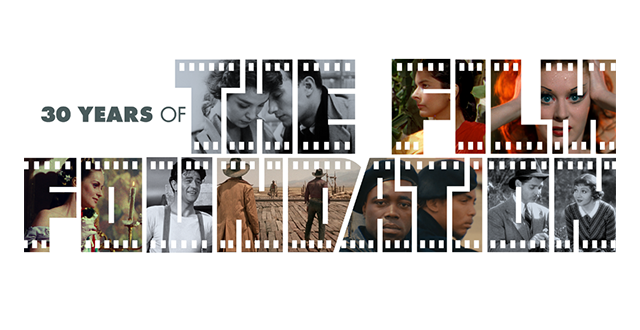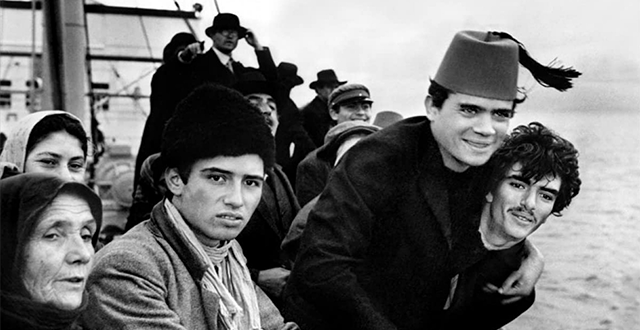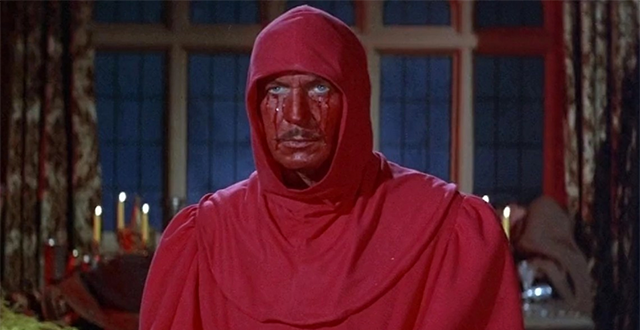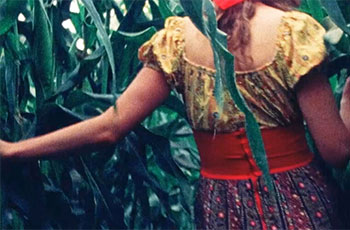News
Top movies to stream include Greta Thunberg documentary and Martin Scorsese picks
Jack Coyle
“I Am Greta” premieres Friday on Hulu. (Courtesy of Hulu/AP)
Here’s a collection of top movies to stream this week.
“I Am Greta”
Hulu
When Greta Thunberg began protesting outside Swedish Parliament two years ago, it only took days for director Nathan Grossman to start trailing her in her mission to prod government leaders on the climate crisis. “I Am Greta,” which premieres Friday on Hulu, documents the enormous movement fueled by Thunberg’s one-person school strike, and a few very surreal years for the Swedish teenager. Along the way, she meets world leaders, speaks at the United Nations and reckons with her newfound notoriety.
This image released by Apple shows filmmakers Clive Oppenheimer, left, and Werner Herzog behind the scenes of “Fireball: Visitors From Darker Worlds,” a documentary about meteors and comets, premiering globally on Apple TV+ on November 13. (Apple via AP) (AP)
“Fireball: Visitors from Darker Worlds”
Apple TV+
Is there a more simply compelling equation for a documentary than Werner Herzog + meteorites? In “Fireball: Visitors from Darker Worlds,” Herzog and Clive Oppenheimer ponder the mythic, spiritual gravitational pull of meteors and comets on humanity — and on Herzog, himself. Having already surveyed volcanoes with his co-director in “Into the Inferno,” Herzog here turns his gaze to the cosmos to rhapsodize on the hunks of rocks hurtling through space. On Apple TV+ Friday.

Director Martin Scorsese poses for photographers upon arrival at the opening ceremony of the 71st international film festival, Cannes, southern France, Tuesday, May 8, 2018. (Photo by Vianney Le Caer/Invision/AP) (Vianney Le Caer/Vianney Le Caer/Invision/AP)
Criterion Channel’s Film Foundation series
Criterion Channel
Three decades ago, Martin Scorsese founded the Film Foundation. Since then, it has been a critical bulwark of film preservation, saving an enormous number of movies from deterioration and illuminating the brilliance of countless others. Over 30 years, the nonprofit organization has aided in some 850 restorations. To celebrate the Film Foundation, the Criterion Channel on Sunday will begin a 30-film series, set to expand over the next year, featuring some of the titles given new life by Scorsese’s creation. Among them: “The Red Shoes,” “It Happened One Night,” “Ugetsu,” “Once Upon a Time in the West” and “Primary.”
Out of the Vaults: “America America”, 1963
Meher Tatna
When director Elia Kazan made America America in 1963, his most celebrated work was behind him. He never regained the audiences of his heyday in the ‘40s and ‘50s, and his last few movies had all lost money. Therefore, he had to struggle to find the financing for America America, his most personal film which was based on the story of his Uncle Joe Kazantzoglou who escaped Turkish oppressors in Anatolia and struck out for America in 1896.
In order to achieve the documentary realism of the film, Kazan found locations in Greece and Istanbul, shot the film in black and white, brought only a few of the supporting cast from the US, and used mostly local talent, including the lead actor Stathis Giallelis. Shooting had already begun in Greece when his producer Ray Stark pulled out, and Kazan had to wait till Warner Bros. stepped in with the money.
Adrian Danks writing in “Senses of Cinema” in the March 2012 issue talks of how the hostility of Turkish authorities caused Kazan to move production to Greece, whereupon customs officials seized the cans of film already shot. “Owing to a prescient switch of labels between exposed and unexposed product, the valuable cargo survived.”
The screenplay, written by Kazan, was based on Kazan’s own novel of the same name that started out as a short story. The film starts with an unprecedented beginning where the director introduces himself and the story via voiceover against the image of a cloud-covered mountain: “My name is Elia Kazan. I am a Greek by blood, a Turk by birth, and an American because my uncle made a journey.”
Set in 1896, a rebellious young Greek man Stavros (the Joe character played by Giallelis) witnesses the massacre of his Armenian neighbors at the hands of the Turks in Anatolia (modern-day Turkey). (Kazan was foreshadowing the Armenian Genocide to come in 1915.) Knowing that they would be coming for the Greeks next, Stavros’ father (Harry Davis) gives his son all the family’s jewelry, carpets and money and sends him to Constantinople to his uncle to invest it all in the uncle’s carpet business. The idea is to eventually reunite the whole family in the metropolis. But Stavros’ eyes are on a bigger prize – he wants to go to America. Constantinople is only the first step.
But he arrives at his uncle’s shop with nothing. He has been cheated by a fellow traveler (a very fine Lou Antonio) on the road who takes advantage of his naiveté to slowly separate him from all his belongings and even his donkey. The furious uncle (Salem Ludwig, Kazan’s colleague from The Actor’s Studio) plans to salvage the situation by marrying Stavros off to a rich merchant’s daughter Thomna (Linda Marsh). Stavros will have none of it, preferring to labor as a ‘hamal,’ one of the dockworkers doing back-breaking work, saving his meager wages for a $110 ticket of third-class passage to America, till a prostitute steals his savings and he is beaten up by her pimp’s thugs. He is forced to return to his uncle, defeated.
In the last act, the marriage between Stavros and Thomna is arranged, but Stavros is still determined to deceive everyone and board a ship to America as soon as he can get the money. It’s only when he first speaks alone with his fiancée in a touching scene that he comes to the conclusion that he cannot betray her and calls off the wedding. A casual lover makes it possible for him to finally board the SS Kaiser Wilhelm for America, but it’s only in the sacrifice of a friend that he makes it to Ellis Island. (The Ellis Island scene was actually filmed in the hall there; it had closed in 1954.)
After the last scene, the film returns to the cloudy mountain and Kazan resumes his voiceover to tell the audience that Stavros (meaning Uncle Joe) did bring the family over to America (including the child Elia) in time. And he then recites the credits of his whole cast and crew.
Kazan’s purpose was to show that Stavros’ journey through all the pain and humiliation was reflective of what a typical immigrant suffered to get to the promised land of America. The film’s cinematographer, Haskell Wexler, a frequent collaborator of Kazan’s, was instrumental in achieving the documentary feel of the film, something not seen in Hollywood films of the time. The juxtapositions of close and long shots such as the cramped interiors of the rude houses in Anatolia against the stark beauty of the land, or the busy landscape of the docks and bazaars contrasting with the carpet merchant’s rich and cluttered rooms are things of beauty, frequently captured with handheld cameras. The editing is a combination of traditional cutting and dramatic jump-cuts marking the passage of time via editor DeDe Allen. If the lead character’s acting abilities fall a bit short, the supporting cast more than carries him, though some of the American accents are a bit jarring. One wonders why Kazan didn’t shoot the dialogue in the vernacular and add subtitles, but that is quibbling. And technologically, the film is a marvel, epic in scope, ambitious in scale and aesthetically groundbreaking.
Kazan won Best Director at the Golden Globes in 1964. Stathis Giallelis won the now-defunct New Star of the Year; he was also nominated for Best Actor. The film was nominated for the also defunct Best Film Promoting International Understanding. The art direction by Gene Callahan won the film its only Oscar. It was nominated for Best Picture, Screenplay and Director.
Martin Scorsese is one filmmaker upon whom the film had a profound influence, enough for him to mention it in his documentary “A Personal Journey with Martin Scorsese Through American Movies.” But in general, critics were not kind and audiences stayed away.
In a long profile on Kazan in the November 9, 1947 issue of the New York Times, staff writer Murray Schumach ended the article this way: “He dreams of making epic films that will portray America and its people; movies that will be shot, not in studios, but in fields, mines, factories. “I want to make folk movies, not folksy movies,” says Kazan. “Odets discovered the Bronx, but no one has discovered America.” Kazan hopes to become the nation’s cinematic Columbus.”
America America was inducted into the National Film Registry of the Library of Congress in 2001 as “culturally, historically or aesthetically significant” and was recommended for restoration.
It was preserved by Warner Bros. in association with UCLA Film & Television Archive. Preservation funding was provided by Warner Bros., the Hollywood Foreign Press Association, and The Film Foundation. Warner Bros. used their fine-grain master positive at YCM Laboratories in Burbank to restore it. Supervised by Haskell Wexler, the film’s director of photography, and Ned Price of Warner Bros., new elements created include a duplicate picture negative, a re-recorded track negative from the original mag track, a check print and a release print from the duplicate picture and track negatives.
COMMEMORATING 30 YEARS OF TFF
For many of us, it’s an odd thing to be living through a moment in which so many people seem so primed to define and categorize not just themselves but absolutely everyone, and so confident in their ability to do so. It’s as if everything under the sun were determined by algorithms for shopping preferences. To be simply this or just that, to assume the license to mock and tear down others on the basis of their being not just that or simply this, seems as self-limiting as it is sadly unproductive. To paraphrase Bob Dylan when he quoted Walt Whitman, we all contain multitudes—everywhere but on social media, that is, which is truly no place at all.
We don’t live on the internet, but in a sprawling and unruly assemblage of multiple landscapes and cultures developing and cross-pollinating under wildly varied conditions, some tragic, some comfortable, some blinkered and some painfully aware. It’s been a truism for many years now that every place in America has come to look like every other place in America, and this is certainly true if you confine your field of vision to commercial strips and “virtual tours.” It takes an artist, unimpressed by polling data or sociological profiles, with an eye fixed on the vital and the sublime, to identify the most precious threads in the tapestry. Les Blank has been gone for seven years now. The most recent of the five of his films that were restored by the Academy with the assistance of The Film Foundation was made 40 years ago. But if Blank were alive today, he would look past all the programmatic judgments and proclamations of division to the pulsing joy of communal celebration and creation that never goes away. His rapturous camera eye coaxes the deepest beauty out of the jazz funerals and Mardi Gras celebrations in Always for Pleasure, the preparation and cooking of food in Creole country in Dry Wood and the Clifton Chenier performances in Hot Pepper. Les Blank was a great American artist, and these films always revivify my sense of what it is to be an American.
- Kent Jones
Follow us on Instagram, and Twitter!
ALWAYS FOR PLEASURE (1978, d. Les Blank)
Restored by the Academy Film Archive with funding provided by The Film Foundation.
DRY WOOD (1973, d. Les Blank)
Restored by the Academy Film Archive with funding provided by The Film Foundation.
HOT PEPPER (1973, d. Les Blank)
Restored by the Academy Film Archive and The Film Foundation, with funding provided by the Hobson/Lucas Family Foundation.
An extended, uncensored cut of The Masque of the Red Death upgrades to 4K in January with cinema, Digital, DVD and Blu-ray releases
StudioCanal will release the extended cut of Roger Corman’s iconic horror film The Masque of the Red Death, restored in 4K by Martin Scorsese’s Film Foundation and The Academy with funding from the Hobson/Lucas Family Foundation. The cult favourite stars Vincent Price, alongside a supporting cast including Jane Asher, Hazel Court, David Weston and Nigel Green and is based on the gothic fiction tale The Mask of the Red Death: A Fantasy by Edgar Allan Poe. The Masque of the Red Death is considered one of Roger Corman’s most distinctive works and an all-time horror classic.
Unseen by audiences until it premiered at the 63rd BFI London Film Festival in 2019, the meticulous 4K restoration brings back to life the cinematography of Nicolas Roeg, the use of colours were thought to influence his love of similar tones in his subsequent directing work. The new version of the film reinstates a number of censored scenes which were cut from the original 1964 release.
The new DVD/ Blu-Ray includes both the restored extended cut and the theatrical cut, a 20-page booklet with a new essay from The Academy’s film preservationist Tessa Idlewine and 4 art cards from the restoration. There is also a host of special features including a brand new interview with Keith M. Johnston, a lecturer in Film and Television Studies at the University of East Anglia University which explores the topics of colour and censorship; a brand new commentary with film critic and author Kim Newman and filmmaker Sean Hogan; and a conversation between Roger Corman and film critic Kim Newman which was filmed in 2013 as part of the BFI’s Gothic Season.
The Masque of the Red Death will be available to own on Blu-Ray, DVD and Digital on January 25, 2021. Special screenings of the film will also be announced closer to release.

Special Features:
- New: Colour and Censorship in The Masque of the Red Death: Interview with Professor Keith Johnston
- New: Audio Commentary with Kim Newman and Sean Hogan
- Roger Corman: In Conversation with Kim Newman at the BFI
- Behind the scenes stills gallery
- Booklet written film preservationist at The Academy Tessa Idlewine
- Art cards






